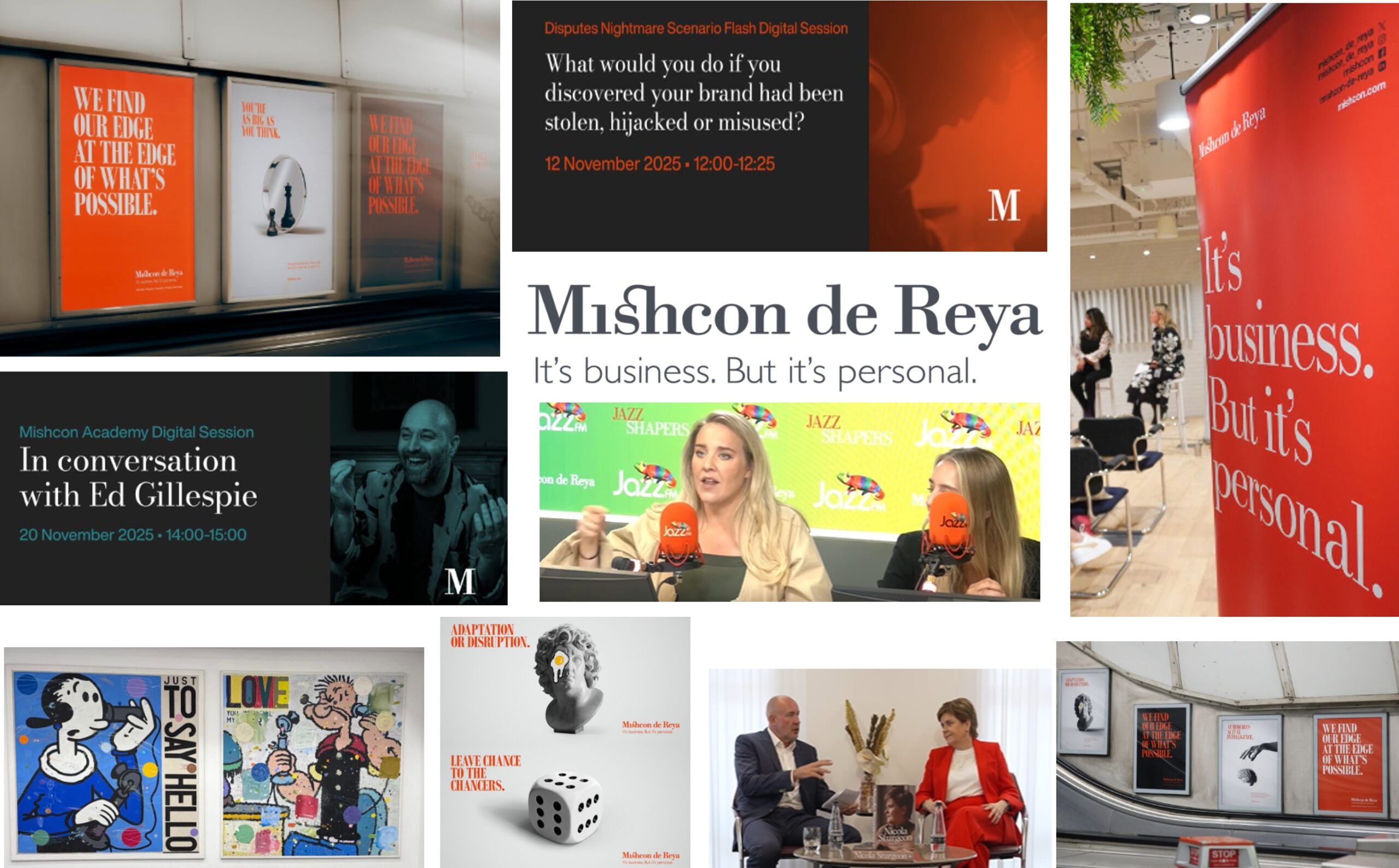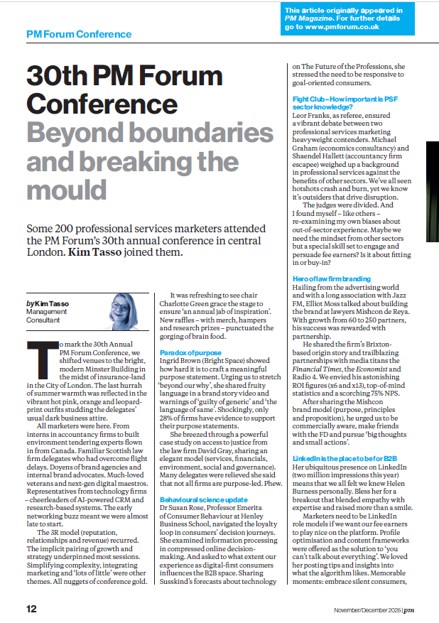
At the “Being more strategic” PM Forum workshop a week or so ago, half of the delegates were in management roles. Many were attached to specific practice groups and some had firm-wide roles. This post picks up on some of the emerging themes and shares the delegate polls as an additional learning resource. Be more strategic – PESTLE, Positioning and Plans.
PESTLE
Several delegates were particularly interested in macroeconomic analysis.
During the discussions about marketing audits (particularly the far external environment), delegates worked in groups to tackle a PESTLE analysis. Here are some of their thoughts although typically a lot of research would be undertaken for such an analysis. It would be a good activity for a group discussion.
Political
- Instability in Government/Future Governments
- Continuing devolution in the UK and possible independence for Scotland
- Instability in some international markets
Economic
- Cost-of-living crisis (Inflation, interest rates and recession) – less business investment
- Energy prices and other impacts from Ukraine
- Property prices and investment and landlord regulation
- Potential insolvencies and bankruptcies
- Working from home and flexible working impact on transport and real estate
- Issues in the supply of talent
- Export and import issues (supply chain issues from Brexit)
Sociological
- Generation differences (e.g. less attendance at university)
- Different family structures
- Mental health issues
- Ageing population (and issues around social care)
- Immigration and social unrest
- Desire for further EDI and social mobility
Technological
- Digital transformation
- AI and automation displacing human advisers
- Metaverse
- Impact of (predictive) analytics
- Preference for digital/virtual meetings
- Electronic vehicles
Legal
- Regulatory increases in some areas and deregulation in others
- Continuing impact of Brexit
- Concerns about privacy and identify theft
Environmental
- Climate concerns and adverse weather impacts
- ESG and Sustainability strategies
The Economist – The year in 2023 (subscription required The World Ahead 2023 | The Economist) is a good starting point for any PESTLE analysis. It focuses on:
- Global recession
- The war in Ukraine and impact on global instability
- High food and fuel prices
- Tensions between fiscal and monetary policy – Fight against inflation
- Transition to renewable energy
- Business facing stagflation (high costs and low demand)
- China’s uncertain post-pandemic path
62% of their superforecasters suggest global growth in 2023 (as measured by IMF) will be between 1.5% and 3%.
Further information on PESTLE:
Marketing basics – Marketing audits with onions and pestles (kimtasso.com)
Using the PESTLE analysis model for your brand | Smart Insights
Law Society Research Report – Future Worlds 2050 (kimtasso.com)
Commerciality – Finance, pricing, innovation and research (kimtasso.com)
Positioning
Several times the weaknesses in competitor analyses were mentioned. And this has an impact on positioning – the ability to influence market perception regarding a brand or product relative to competitors.
A marketing positioning strategy is designed to carve out and amplify an identity that is different from competitors (differentiation). Typically, this involves an analysis of the points of parity (POP) and points of difference (POD).
Positioning strategies (market positioning, product positioning, brand positioning, price positioning, and competitor-based positioning) need to be aligned.
From a strategic perspective, there are four possible positions: market leaders, market challengers, market followers and market nichers.
VRIO or VIRO is a technique used to find competitive advantage VRIO Framework Explained – SM Insight (strategicmanagementinsight.com)
The perceptual map is a frequently used technique for positioning. Understanding perceptual maps (segmentationstudyguide.com) or How To Create A Perceptual Map Of Your Brand’s Competitors (getlucidity.com)
A Beginner’s Guide to Positioning Strategy [+Examples] (fool.com)
A Complete Guide to Successful Brand Positioning (hubspot.com)
become the firm of choice – strategy development (kimtasso.com)
Plans
Marketing analysis and the generation and choice of marketing strategies need to be summarised into plans – so that we can assess and monitor the resources used and the results and impact achieved.
But we may need different types of strategic marketing and business development plans to suit the different audiences and purposes for plans. Specifically, a M&BD team may need far more detailed plans than fee-earners who will prefer a high-level summary showing the main actions required.
Planning resources:
Why do you need a business plan? 10 reasons why (kimtasso.com)
Marketing planning in a nutshell – simple and complex plans (kimtasso.com)
Key issues in Marketing and Business Development Planning (kimtasso.com)
Marketing and Business Development Planning in a Nutshell (kimtasso.com)
Book review: B2B Marketing strategy (kimtasso.com)
Book review: Build your digital marketing strategy by Steve Brennan (kimtasso.com)
The HubSpot guide is a useful introductory guide 7 Steps to Create a Complete Marketing Strategy in 2023 (hubspot.com)
And this guide focuses on planning in professional services Creating a Marketing Plan: A Guide for Professional Services Firms – Hinge Marketing
Delegate information
Delegate aims
Reasons for attendance were varied but included:
- Bring a more strategic approach to current projects
- Think more strategically
- Move into a more senior and/or strategic role
- Learn about the macroenvironment
- Consider how to target and enter different markets
- Adopt a more global role
- Look at things from an external perceptive
- Prepare for the next planning cycle
- Create efficiencies within the firm and the team
- Integrate and streamline different groups together
- Prioritise scarce resources
- Take a step back
- Obtain new ideas and ways of thinking
Amongst the PSF strategies and brands most admired (although we recognised that it was hard to determine the strategies from outside firms) included:
- Bird & Bird for strong brand identity and sector focus
- Linklaters positioning and brand
- PWC ability to connect on Board themes
- KPMG on brand and campaigns
- Other Big Four accountants for being ahead of the game and being organised and process-driven
There was a visualisation exercise where we considered what we would like things to be like in the future:
- Fee-earners understand and have a better relationship with their clients and understand what needs to be done to achieve this on an ongoing basis (making me feel valued by the business and that their success is my success)
- Fee-earners see the reasons why we do what we do
- A more focused approach to winning new business (greater segmentation)
- Sense of appreciation, sense of knowing the value we have added and contribution to the wider business strategy
- Sense of working together for a wider goal. Sense of drive.
Delegate Key takeaways
- Strategic Analysis
- Start with macro
- Macro/onion approach (see Marketing basics – Marketing audits with onions and pestles (kimtasso.com))
- Look at sector issues and trends to prepare myself for 2023 marketing planning
- Complete a marketing audit (See Marketing planning in a nutshell – simple and complex plans (kimtasso.com))
- Look at marketing metrics
- Look out for weak signals
- Ask difficult question ‘as why we are doing it?’
- Find the strategic gap
- Goals
- Think about the WHY (see Start With ‘Why’ – TED Talk from Simon Sinek – YouTube)
- Helicopter view (see Strategy basics – Mission and vision statements with hedgehogs (kimtasso.com))
- Look at objectives from other angles – not just M&BD
- Work backwards from what success looks like (for all)
- Ensure everyone is aligned with the core objectives
- Process
- Be willing to unlearn
- Get people on board from beginning
- Work together as a group and not do it all on my own.
- Have a clear campaign plan
- Achieve buy in from all stakeholders
- Work with other stakeholders to share ideas and brainstorm
Delegate polls
Delegates find it useful to benchmark their responses to their peers.
What is your sector?
65% Legal
24% Accountancy
12% Consultancy
How much experience do you have in strategy?
6% None
35% A little
59% Average
Do you have a marketing qualification?
69% Yes
31% No
Which topic is of most interest to you?
47% Thinking strategically
24% Understanding business strategy/strategic analysis
29% Marketing/Business Development strategy
Where is your strategic focus?
31% The firm overall
0% Sectors
44% Departments/Practice Groups
13% Campaigns
13% Services
Which presents the biggest challenge to you?
29% Strategic analysis
0% Strategic options
18% Strategy choice
53% Strategy implementation
Have you completed a marketing audit for your firm/team?
18% Yes
82% No
Which element of strategic analysis do you most need to improve?
25% Internal analysis – Strengths and weaknesses
6% Internal analysis – Past clients and sources of work
38% External analysis – Competitors
6% External analysis – Sector issues and trends
25% External analysis – far environment/PESTLE
Which of the following is closest to describing your goals?
18% Really well defined
59% Well defined
24% Partially defined
Which frameworks have you or do you use?
47% Segmentation, targeting and positioning
20% Ansoff markets and services
7% BCG portfolio analysis
27% Porter’s generic strategic/Five Forces
7% McDonald’s marketing plan
33% SOSTAC™
20% STAR
7% RACE
Which segmentation approaches are used at your firm?
81% Market or industry sector
50% Size of business
44% Job function
69% Geography/region
31% Nature of relationship
19% Personas
44% A mixture
How do you rate your firm’s measurement of M&BD effectiveness?
6% Excellent
50% Good
38% Average
6% Bad







